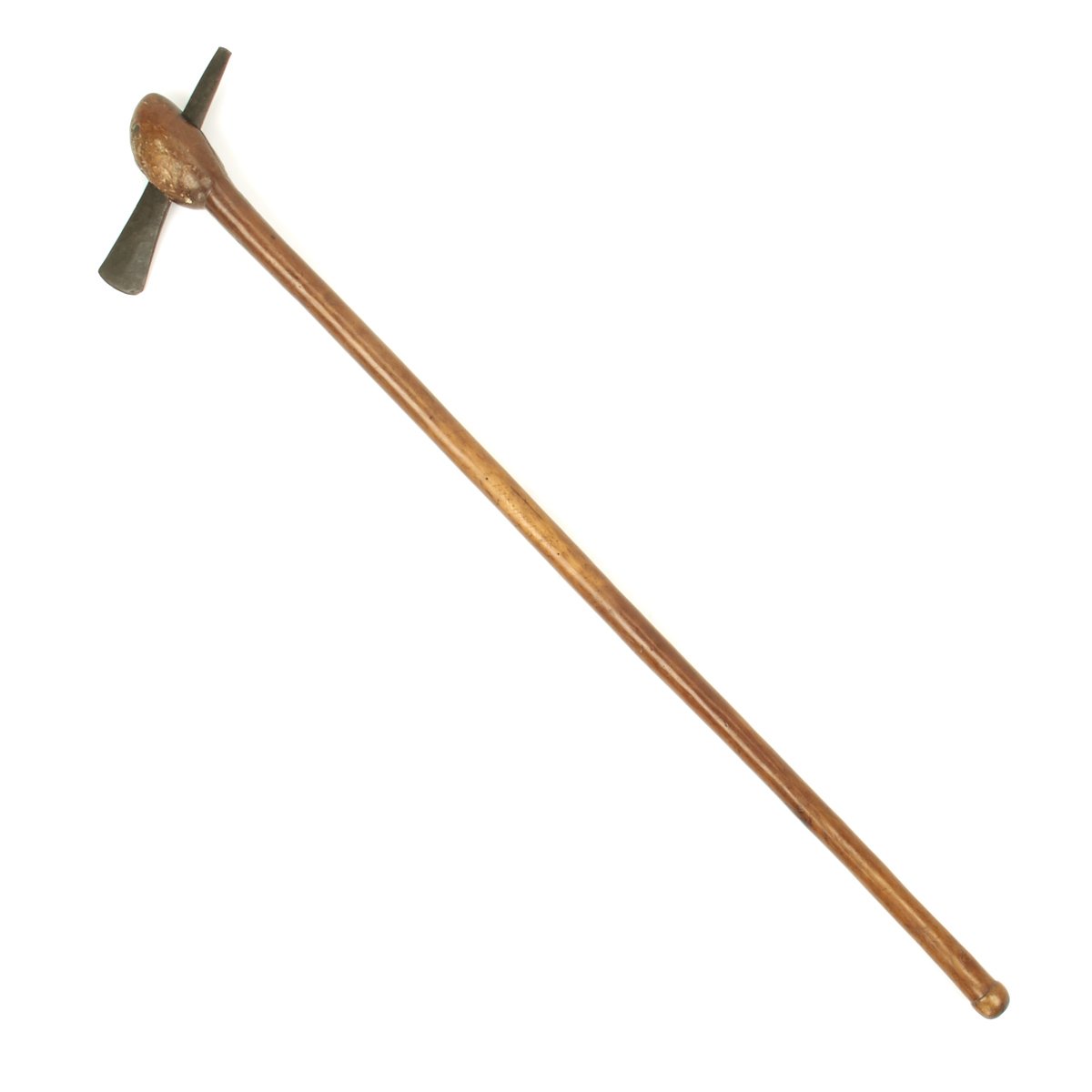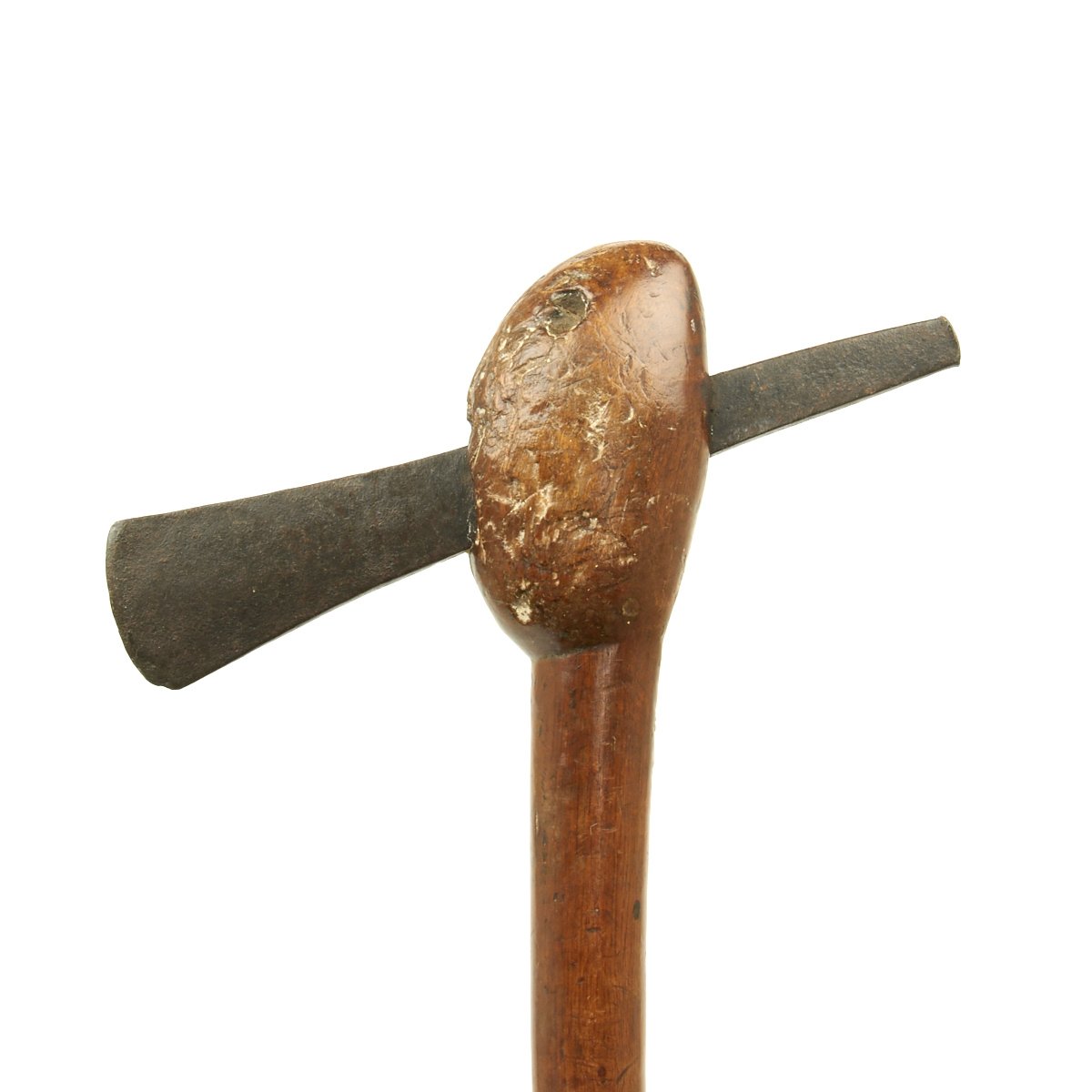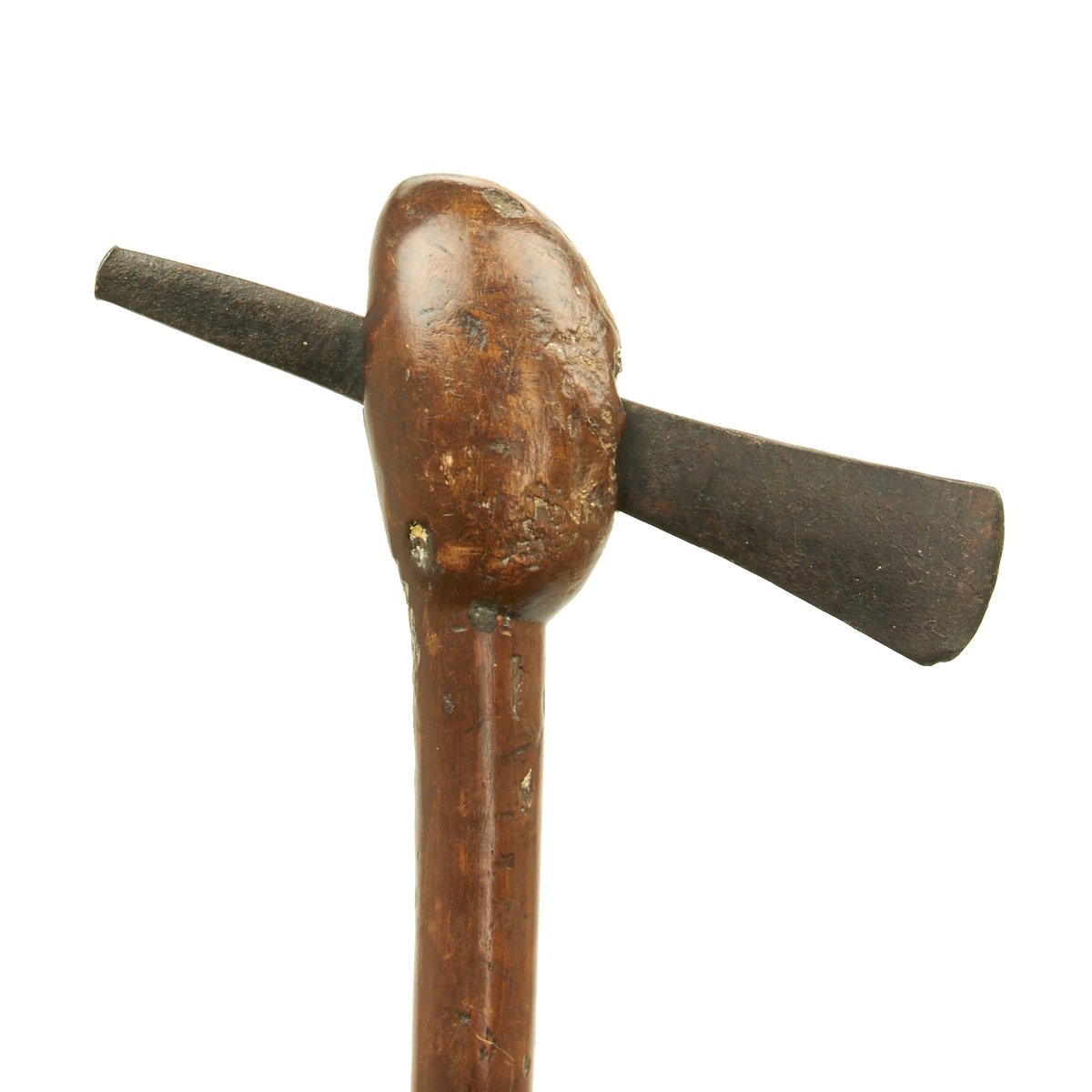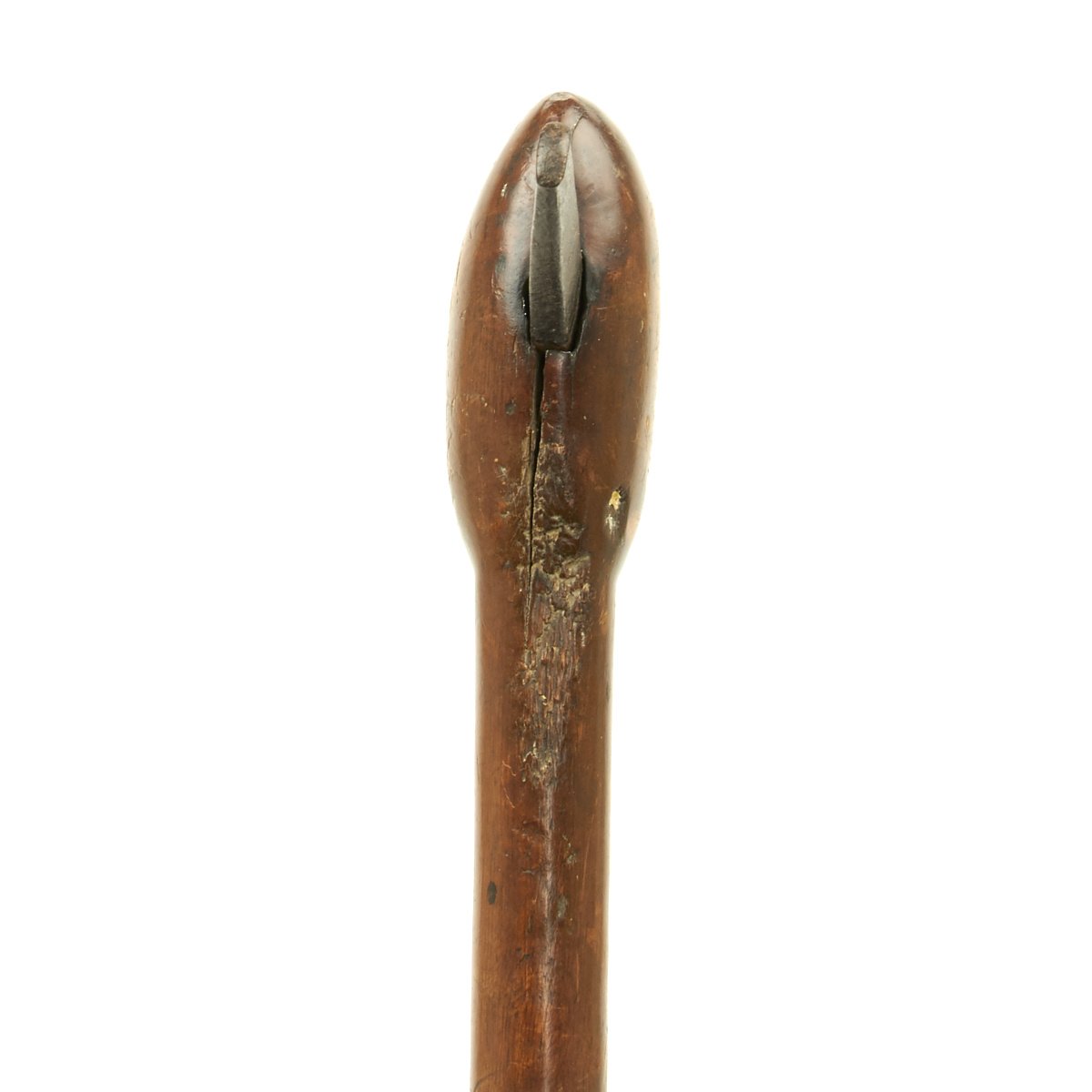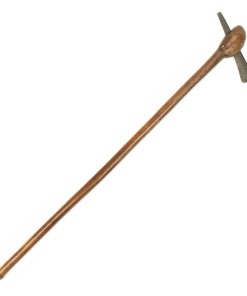Original African Shoka Small War Axe – Circa 1870 Original Items
$ 295,00 $ 118,00
Original Item: Only One Available. Africans have been refining and smelting metal and making iron implements since 1200 B.C. In fact, the Iron Age occurred earlier in Africa than in Europe. Iron implements grant a huge advantage to the user in all shapes and forms – working axes and hoes facilitated agricultural expansion in Sub-Sahara African societies, hunting became easier, and warfare became deadlier with the introduction of iron spears, arrow points, and knives.
Smelting was remarkably challenging in ancient Africa. It was so complex that the men who possessed the knowledge often formed guilds that guarded the secrets of ironwork. A furnace had to be constructed, hard wood for a high temperature burn had to be gathered, and the bellows had to be worked constantly for days. Iron pieces were typically intricate, and an ironworker took personal pride in the pieces he produced. As guns and other intricate metal inventions were introduced to the region, blacksmiths mastered these new arts.
As European intervention grew in the 17th through 19th centuries, the African iron market was flooded with European metals. These new materials required less effort and energy to procure than the elaborate traditional smelting process. These foreign metals, iron included, replaced traditionally made metal, but blacksmiths continued to make their stylized metal tools in traditional forms. In the colonial era of 1880-1950, European hardware entered the African markets, and this flow of cheap European goods managed to displace the traditional ways of the African blacksmith.
This example is a very interesting war Axe known as a “SHOKA” (English to Swahili Meaning of axe) from the Central South Western part of Africa we now know a Swaziland. This war axe has a straight wooden shaft that supports a traditional triangular axe head, which protrudes from both sides of the handle. The head is mounted at an angle, to maximize effectiveness of a forward strike. The axe measures approximately 29 inches in overall length, and the head is 6 1/4 inches long.
Offered in excellent condition, circa 1870 to 1900.
Fast Shipping with Professional Packaging
Thanks to our longstanding association with UPS FedEx DHL, and other major international carriers, we are able to provide a range of shipping options. Our warehouse staff is expertly trained and will wrap your products according to our exact and precise specifications. Prior to shipping, your goods will be thoroughly examined and securely secured. We ship to thousands clients each day across multiple countries. This shows how we're dedicated to be the largest retailer on the internet. Warehouses and distribution centres can be located throughout Europe as well as the USA.
Note: Orders with more than one item will be assigned a processing date depending on the item.
Before shipping before shipping, we'll conduct a thorough inspection of the items you have ordered. Today, the majority of orders will be delivered within 48 hours. The delivery time will be between 3-7 days.
Returns
The stock is dynamic and we cannot completely manage it because multiple stakeholders are involved, including our factory and warehouse. So the actual stock may alter at any time. It's possible that you may not receive your order once the order has been made.
Our policy is valid for a period of 30 days. If you don't receive the product within 30 days, we are not able to issue a refund or an exchange.
You can only return an item if it is unused and in the same state as the day you received it. You must have the item in its original packaging.
Related products
Uncategorized
Uncategorized
Uncategorized
Uncategorized
Uncategorized
Uncategorized
Uncategorized
Australian WWII Owen MK1 Machine Carbine SMG Custom Fabricated Replica with Sling Original Items
Uncategorized
Uncategorized
Uncategorized
Uncategorized
Uncategorized
Armored Burgonet Helmet & Polearm from Scottish Castle Leith Hall Circa 1700 Original Items
Uncategorized
Uncategorized
Uncategorized
Band of Brothers ORIGINAL GERMAN WWII Le. F.H. 18 10.5cm ARTILLERY PIECE Original Items
Uncategorized

